| Protologue: |
Bulletin of Miscellaneous Information, Kew 1(5): 3 (1887). |
| Etymology: |
The epithet honors Sir John Kirk, an early 20th century British political agent in Zanzibar, who also collected plants. |
| Distribution: |
Malawi, Zimbabwe, and Tanzania. |
| Subgenus: |
Capitulatus |
| Group: |
Sansevieria scimitariformis |
| |
Sansevieria kirkii Baker var. pulchra N. E. Brown |
| Protologue: |
Bulletin of Miscellaneous Information, Kew (5): 256 1915). |
| Etymology: |
The varietal epithet means beautiful. |
| Distribution: |
Zanzibar (Tanzania). |
| Brief Description of the Typical Species: |
Another broad-leaf, acaulescent, and rhizomatous species, Sansevieria kirkii has 1 - 3 erect or ascending-spreading and smooth, flexible leaves. The leaves are elongate-lanceolate or broadly lorate and 75-275 long and 6-9 cm wide. The leaves gradually narrowed downwards from about the middle to a channelled petiole that is whitish-brown. The leaves are a dark greyish-green with conspicuous lighter mottling and light green banding; 3 - 9 dark green longitudinal lines may be present to the whitish-brown tip, and the margin is wavy and reddish-brown. The inflorescence is capitate and up to 60 cm tall. |
| Brief Description of Variety pulchra: |
The leaves of this variety are more conspicuously marked with reddish-green blotches or irregular bands. |
| Similar Species: |
Sansevieria kirkii has similarities to a number of other species, notably Sansevieria vanillosa. Sansevieria bhitalae once was thought to be this species, but it has inflexible leaves and grows far to the west. Small details of the coloration and blotch patterns make identification reasonably easy; in addition, Sansevieria kirkii tends to quickly grow into dense stands in cultivation. Sansevieria kirkii var. pulchra intergrades in its colorful patterning with typical Sansevieria kirkii, depending upon the amount of light cultivated plants are grown in, making this variety somewhat dubious. Sansevieria kirkii var. pulchra 'Coppertone' has more vivid coloration than the variety, and the distinction between the cultivar and typical species is perhaps sufficient to justify the variety without consideration of the similarity of the inflorescences. |
| |
| |
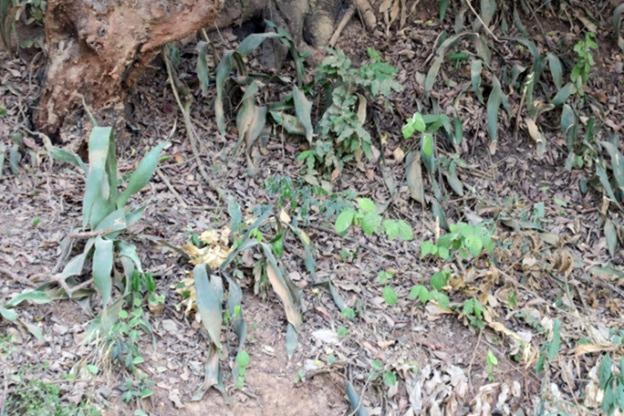
A stand of Sansevieria kirkii south of the Pangini River near Pangini, Tanzania. These plants are slightly dust covered from a major dirt road.
|
| |
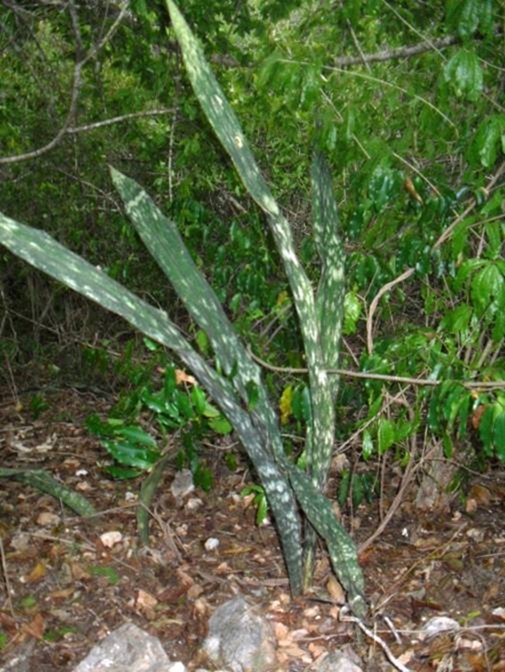
Sansevieria kirkii next to the Indian Ocean at Shimoni, Kenya.
|
| |
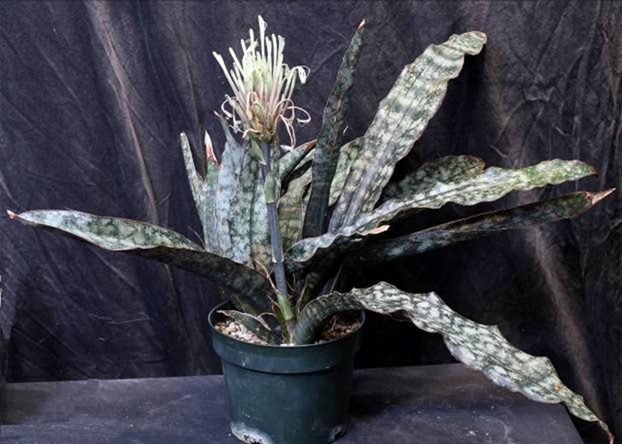
Sansevieria kirkii flowering in cultivation.
|
| |
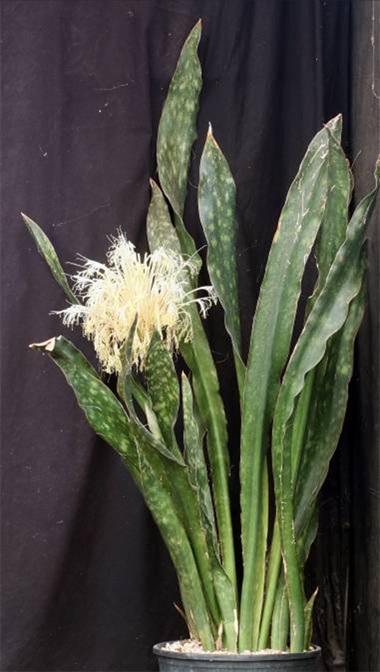
Sansevieria kirkii var. pulchra flowering in cultivation.
|
| |
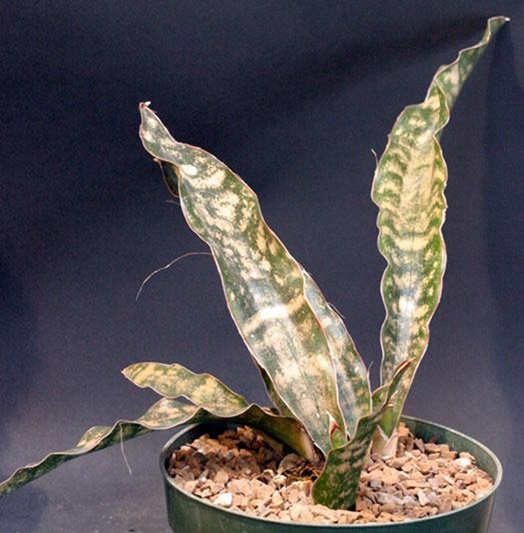
Sansevieria kirkii var. pulchra 'Coppertone' in cultivation.
|

